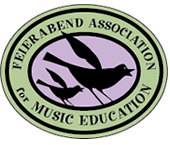Virtual learning during COVID necessitated my ability to have my students progress through conversational solfege via Zoom and other digital platforms. I could teach and assess students by having them unmute themselves and echo or decode individually for the Readiness, Conversational Solfege, and Reading steps. But when I got to writing, I didn’t have an efficient way of having students hand in their work because we were not in person. I decided to use Google Slides and Google Classroom to satisfy these steps. I used Google Slides to create the assignments and Google Classroom to share them with students and receive/grade them. The assignments were created using Google Slides on a PC. I do not know how the creation and sharing steps would change if using PowerPoint or a Mac.
For Step 9 – Rote (Copying), I uploaded a worksheet I purchased from Brittain Music on TeacherspayTeachers to Google Slides to share it with my students. I then inserted matching notation symbols for the students to drag and drop into the correct position on the page. (Instructions on how to do this are included in the video.) Even though they cannot physically handwrite the notation, this method allows them to practice spacing notes evenly and in a straight row.
For Steps 10-12 – Decoding and Writing Familiar/Unfamiliar, I could scan and upload any poem or song from the CS binder and use the shapes tool to block out the printed notation. Or, the worksheet from Brittain Music is part of a collection of worksheets for each CS unit, so I could also upload one of those. Again, I would insert corresponding notation symbols into the Google Slide so the students can manipulate and position them correctly.
One important tech step I neglected to mention in the video is that when you upload the assignment to Google Classroom, you MUST check the dropdown box that says, “Students can view the file,” and change it to, “Make a copy for each student.” If you forget to change that setting, the students will change your master copy, and not all be able to do their assignments.
When grading Step 9 assignments, I use the following rubric that I created:
- Advanced = 4 pts
Writing has the correct number of beats in each measure. All notes are in a straight line and evenly spaced. - Above Basic = 3 pts
Writing has the correct number of beats in each measure. Most notes are in a straight line and evenly spaced. - Basic = 2 pts
Writing does not have the correct number of beats in each measure. Few notes are in a straight line and evenly spaced. - Needs Improvement = 1 pt
Writing does not have enough beats or has too many beats in each measure. Notes are not in a straight line and are not evenly spaced.
When grading Steps 10-12, I give a maximum point value equal to the number of beats in the song/speech piece they are writing. Each beat that has a wrong rhythm is deducted one point.
Here is the link to a free worksheet download from FAME member Adam Brittain. His materials can be found by searching Brittain Music on TeacherspayTeachers. This worksheet is Unit 1, Step 9.

